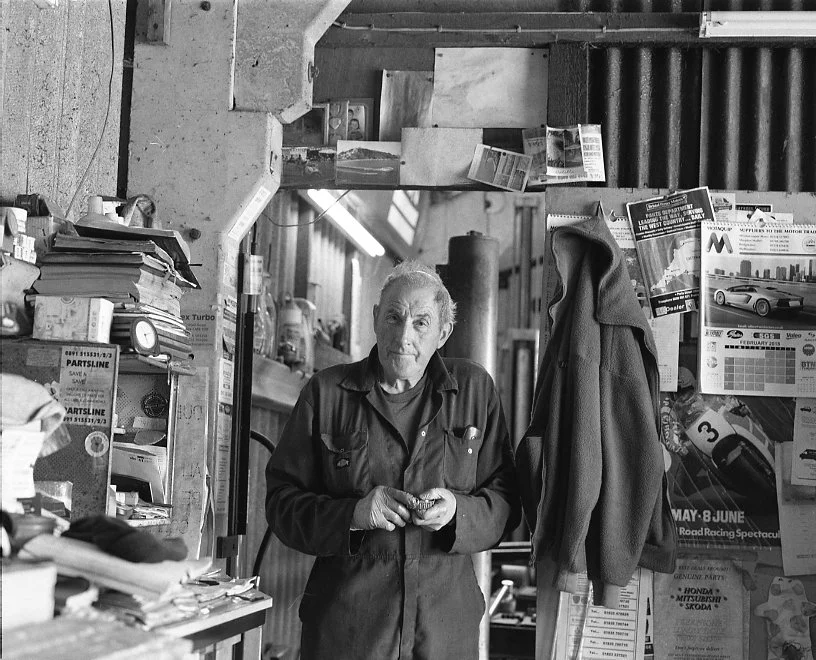

Here at Negative Thinking, we offer a wide variety of photographic process for you to learn and enjoy. Our expert tutors can guide you through which process may best suit your working style or creative needs, and our extensive workshop program allows you to explore the potential of handmade photography with confidence and at an affordable price.

-
![]()
Wet Plate Collodion
This beautiful process will transport you back in time to the 1850’s. Using large format cameras and vintage Petzval lenses, Wet Plate Collodion renders uniquely gorgeous images in silver, on glass or metal plates.
-
![]()
RA4 Reversal
This wonderful process involves using colour photographic paper to produce incredible one-of-a-kind direct positive images, straight from the camera - a process a with real “wow” factor!
-
![]()
Lith Printing
Using vintage papers and specialist chemistry, this process creates prints with incredibly rich contrast, creamy highlights, and colourful tone. Images can be reminiscent of soft pencil sketches or hard and charcoal-like in character.
-
![]()
Mordançage
Using a technique developed in the 1960’s, this enchanting process enables the photographic artist to explore the material nature of the silver gelatine print; by applying specialist chemistry to its surface, the gelatine is softened, and is able to be delicately manipulated into fragile veils, resulting in beautifully ethereal imagery.
-
![]()
Silver Gelatine Printing
Black and white silver gelatine printing is the perfect way to bring your negatives to life. The richness of tone and clarity that this process offers makes it truly special, and provides the photographer with a way to engage more deeply with their work.
-
![]()
Albumen Printing
One of the oldest processes we teach, Albumen Printing uses a solution made from egg whites and salt, sensitised with silver nitrate, to produce beautifully glossy, tonally rich prints.
-
![]()
Cameraless Photography
Learning how to make photographs without a camera opens up a whole new world of possibilities for the creative image maker. This term includes Chemigrams, Photograms, luminograms, and many other techniques that utilise silver gelatine paper, chemistry, and light in combination with the hand of the artist.
-
![Portrait, Paper Negative, Negative, Alternative Process, Darkroom, Large Format]()
Paper Negative
This process utilises silver gelatine printing paper in place of film to render beautifully soft, ethereal imagery. Paper negatives can be manipulated after development through scratching, tearing, folding, and crumpling the paper itself, or by adding marks through drawing, painting, or through chemical intervention, to create something wholly unique.
-
![]()
Chromoskedasic Sabattier
Chromoskedasic Sabattier - or Chromo for short - is an incredible process that rewards experimentation. By using specialist chemistry and advanced darkroom techniques, the photographer can create prints that render the highlights of an image in reflective, metallic silver.
-
![]()
Liquid Emulsion
This process is so special, as it allows the photographer real creative freedom in their printmaking. The liquid silver gelatine emulsion can be applied to almost any surface, enabling images to be printed onto three-dimensional objects; paper, glass, fabric, or anything else you can imagine!
-
![]()
Sabattier
First discovered in 1859, the Sabattier Effect is a darkroom technique that renders a partial inversion of an image due to re-exposure of the print during development. The process was perfected by Lee Miller and Man Ray, and is a truly beautiful way to create something incredible from your negatives.
-
![]()
Chromogenic Printing (C-Type)
Colour printing by hand is a process that rewards the photographer with the creative freedom to bring their images to life in a way that simply has no comparison. A hand made C-Type print has an incredible richness and depth of colour, and benefits from the warmth of character only found in darkroom printing.












